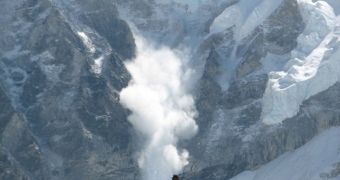High-mountain environments are just as unpredictable as they are beautiful, as all mountain-goers surely know. While it is indeed beautiful to climb the tallest peaks and camp there, that is also extremely dangerous, especially on mountains that have been deemed to exhibit a high degree of risk for humans. Near tourist resorts, unstable snow that causes avalanches is generally removed, but in wilder areas that is not the case. Now, scientists surveying the Alps are taking to technology for creating a new and advanced monitoring network of sensors for keeping an eye on things.
Unfortunately, as international authorities bicker and whine about various things, global warming exerts an increasing influence on mountains, as evidenced by statistics showing the incidence of landslides and avalanches. Warmer temperatures keep destabilizing the snow, which melts and infiltrates the ground, making it easier for landslides to occur. In other instances, the unstable layer promotes the separation of large portions of the snow cap, triggering dangerous avalanches. But a network of sensors, powered by renewable energy produced at their location, could be used to monitor these changes and to study the effects of climate change on mountainous environments.
For example, in the Italian Alps, in a region known as Valle d'Aosta, weather stations have been connected to the cell phone network. Areas starting 2,000 meters (6,500 feet) above sea levels are now being monitored without too many difficulties. Tasks, such as predicting temperatures, snow and rainfall, or wind directions, are now performed inside offices located out of harm's way, and do not necessarily require human presence at the exact location that is being analyzed.
“This allows us to have at our desks real-time data measured in remote sites. This means we can always verify that the equipment is up and running, but we can also remotely gather the data we need, even when there are intense storms and it is impossible to reach the stations,” says Valle d'Aosta environment agency researcher Umberto Morra di Cella. He explains that solar panels help power up the stations. Human workers only intervene when maintenance work needs to be performed. Engineers are flown to these locations using helicopters.
“Our territory is particularly fragile and we have counted almost 5,000 mud or landslides in history and we have had a whole series of floods. In the last 10 years we have implemented systems to give us the information to see if we about to have a very serious weather event,” adds Italian geologist Sara Ratto. “This is not a static object, but is a dynamic one. We study this evolution because knowing the volumes of these ice masses is very important for risk managers,” concludes Secure Mountain Foundation environmental engineer Fabrizio Diotri, quoted by the BBC News.

 14 DAY TRIAL //
14 DAY TRIAL //